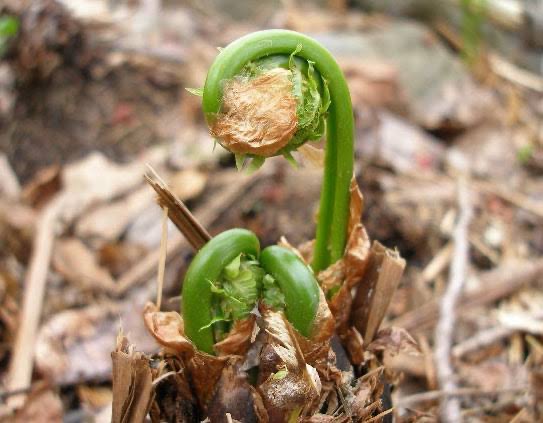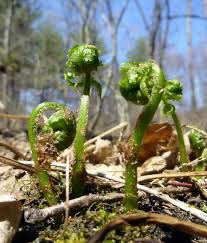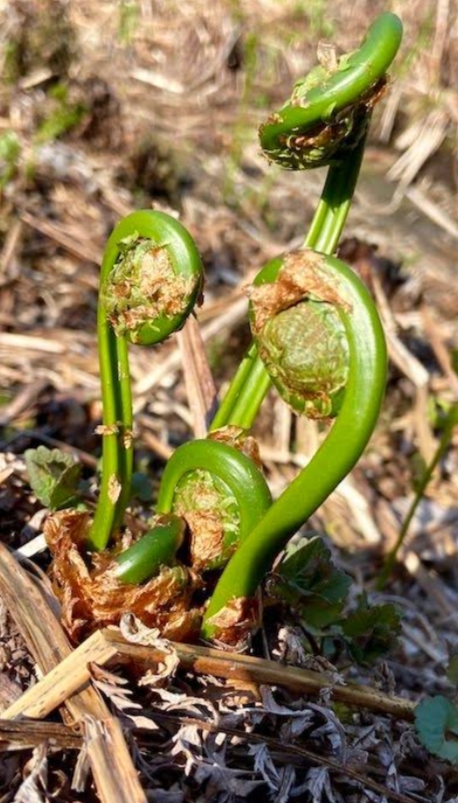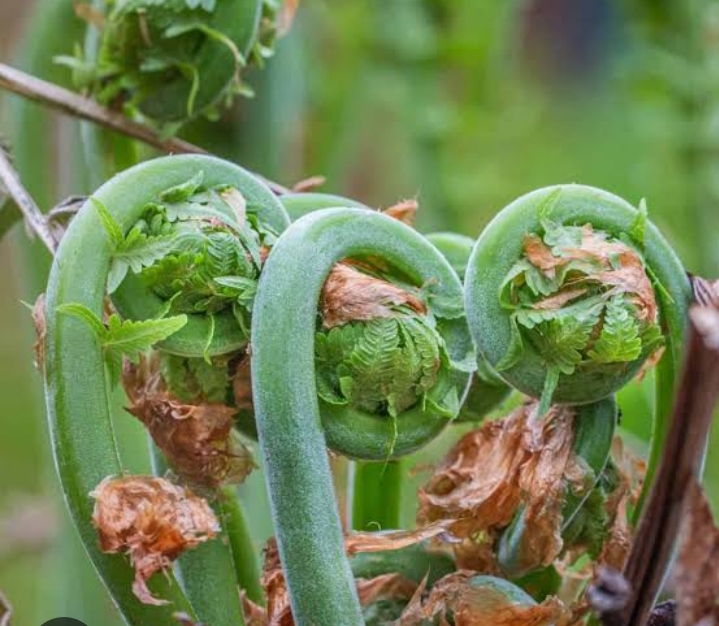Fiddlehead Fern
Fiddlehead fern, a perennial, prefers well-drained, moist soil and partial shade to full sun. It has slow growth and benefits from consistent moisture.
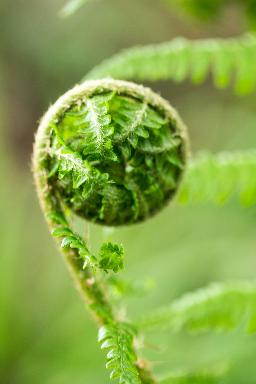
Habit
Perennial
Height
0.5-1 m
Growth
slow
Soil
Well-drained, acidic soil
Shade
Partial shade to full sun
Moisture
moist
Edible
Yes
Medicinal
Yes
Origin
Northern Hemisphere
Climatic Condition
Temperate
Temperature (°)
10-25°C
Humidity (%)
60-80%
Potting media
Peat-based mix
Fertilizers
Organic compost
Watering
Water regularly; prefers moist, shady location
Plant Weight
0.5-1 kg
Flowering Time
Spring to Summer
Soil Ph level
5.5 - 6.5
Water Ph level
6.0 - 7.0
Soil EC
0.3 - 0.5
Yield Per Plant
Edible shoots
NPK ratio
10:10:10
life Span
Perennial
Health Benefits
High in antioxidants; used in traditional cuisine.
Suggested Grow Media or Potting Mix ?
50% peat moss, 30% perlite, 20% compost
Suggested Fertigation/Fertilizers
Fertilize every 2 weeks with a balanced, water-soluble fertilizer.
Common Diseases and Remedies
early blight
yellowing of leaves, browning , stunted growth
remove the affected ones , burn them
HEALTH BENEFITS
- High in vitamins A and C, iron, and antioxidants.
- Supports immune function and eye health.
What Is A Fiddlehead Fern Plant?
A Fiddlehead Fern plant refers to the young, coiled fronds of certain fern species before they unfurl into mature fronds. These fiddleheads are named for their resemblance to the curled end of a violin or fiddle. Fiddlehead Ferns are commonly found in forested areas and are harvested as a seasonal delicacy for culinary purposes in some cultures. They have a unique flavor and texture and are often enjoyed steamed, sautéed, or in various dishes. However, it's essential to properly identify and prepare fiddleheads, as some species may contain toxins if consumed raw or undercooked.
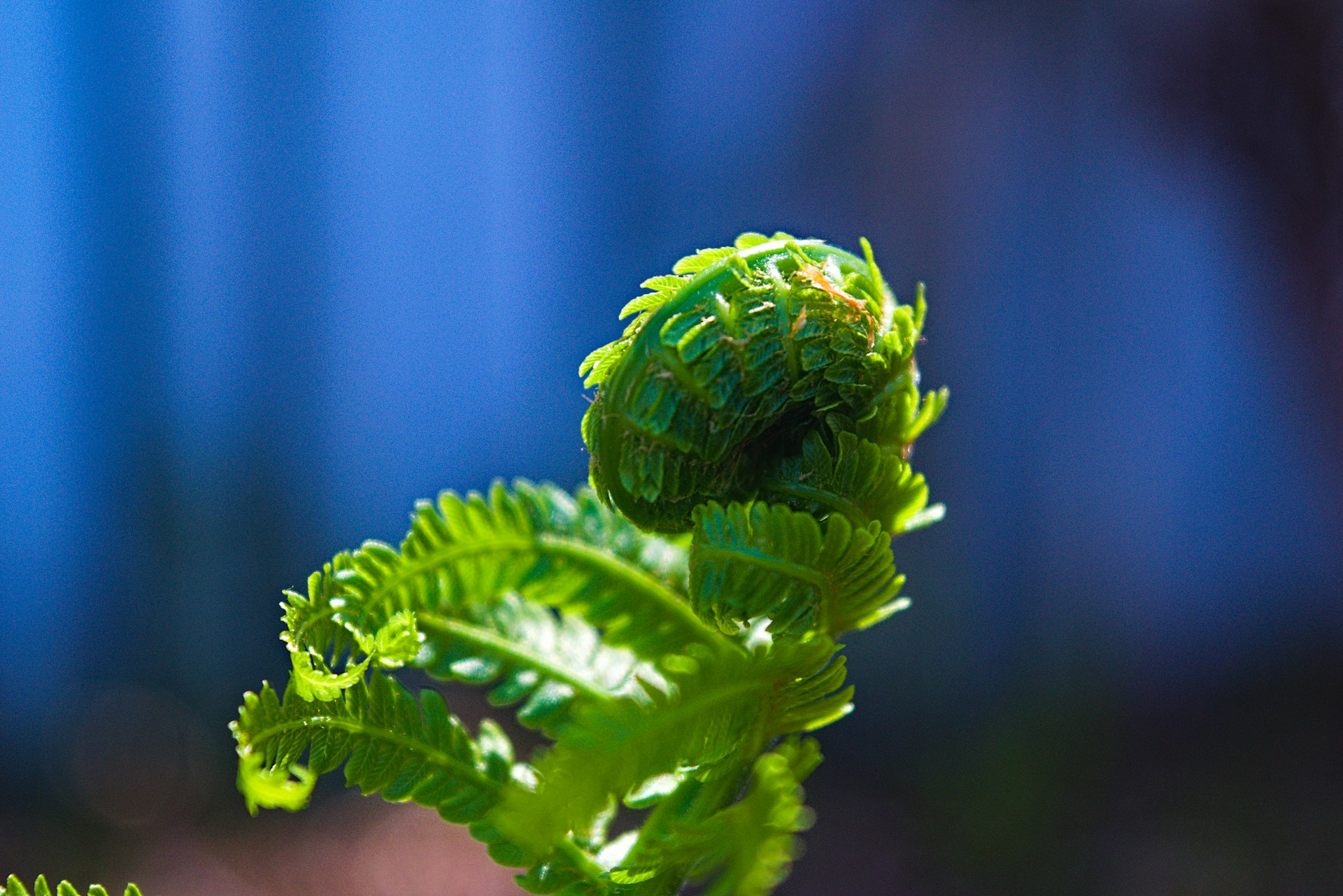
What are the different types of Fiddlehead Fern plant?
There are several types of ferns that produce edible fiddleheads, each with its own unique characteristics. Some common types include:
1. Ostrich Fern (Matteuccia struthiopteris):-
Ostrich Fern fiddleheads are among the most popular and widely harvested for culinary use. They have a distinctive deep green color and a delicate, slightly sweet flavor.
2. Cinnamon Fern (Osmundastrum cinnamomeum): -
Cinnamon Fern fiddleheads are named for their cinnamon-colored scales, which cover the young fronds. They have a mild, nutty flavor and are often enjoyed in a similar way to Ostrich Fern fiddleheads.
3. Bracken Fern (Pteridium aquilinum):-
Bracken Fern fiddleheads are commonly found in many parts of the world and have a slightly bitter flavor compared to other varieties. They require thorough cooking to remove potentially harmful toxins.
4. Lady Fern (Athyrium filix-femina):-
Lady Fern fiddleheads have a delicate flavor and texture, with a lighter green color compared to other varieties. They are prized for their tenderness and are often enjoyed in salads or lightly sautéed.
5. Royal Fern (Osmunda regalis):-
Royal Fern fiddleheads have a unique appearance, with densely packed clusters of small, round fronds. They have a mild, slightly tangy flavor and can be used in various culinary applications. Each type of Fiddlehead Fern offers its own culinary nuances, but it's essential to properly identify and prepare them, as some fern species may contain toxins if consumed raw or undercooked.
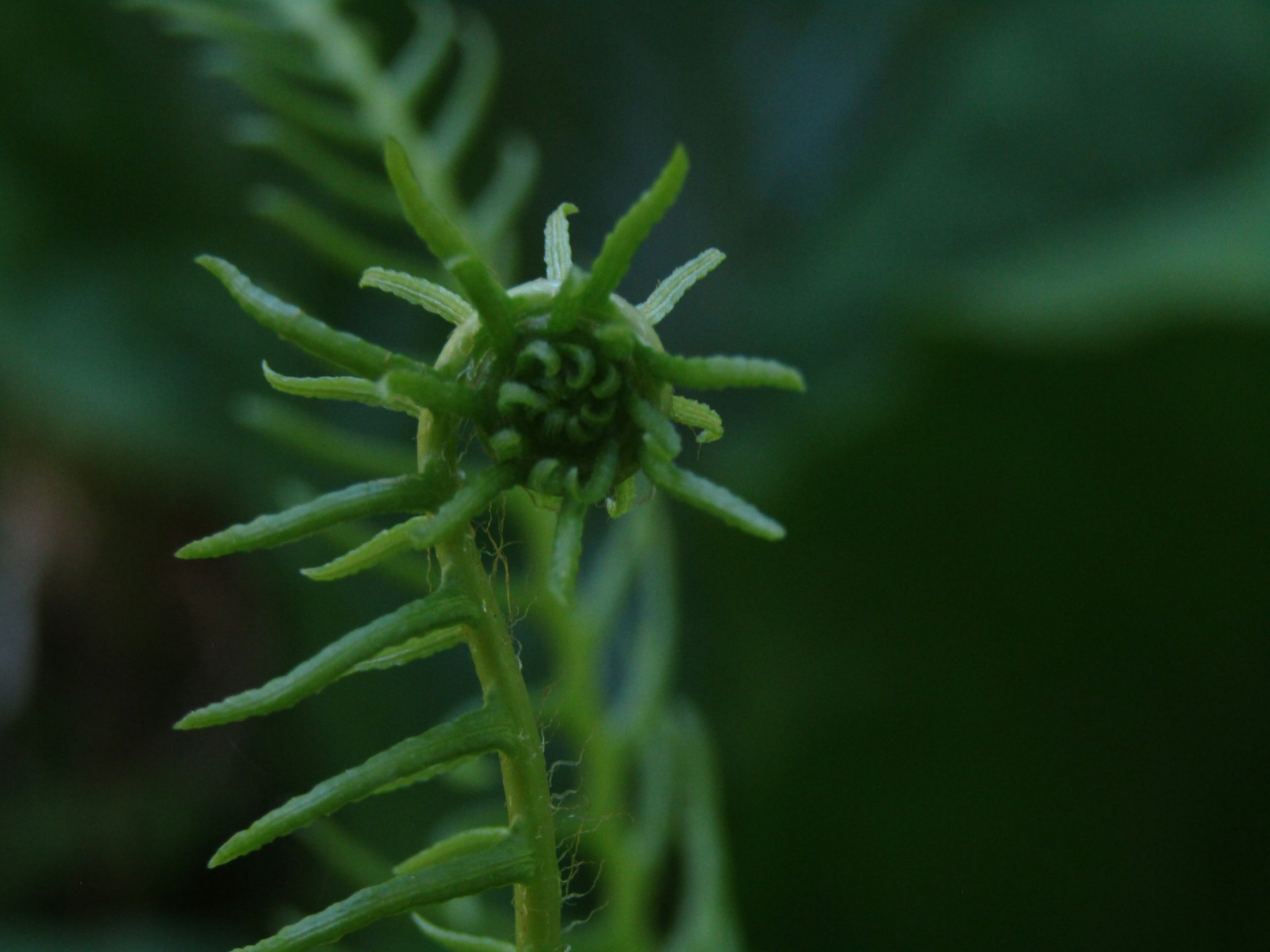
How to care for Fiddlehead Fern plant?
1.Location:
When choosing a location for your Fiddlehead Fern plant, opt for a spot that provides indirect sunlight or partial shade. These ferns thrive in areas with filtered light or dappled sunlight, such as near a north or east-facing window where they can receive gentle, indirect light throughout the day. Avoid placing them in direct sunlight, as it can scorch their delicate fronds. Additionally, ensure the chosen location has relatively high humidity levels to mimic their natural forest habitat.
2.Sunshine:
Fiddlehead Fern plants prefer indirect sunlight or partial shade. While they require some light to thrive, direct sunlight can scorch their delicate fronds. Therefore, it's best to place them in locations with filtered or dappled sunlight, such as near a north or east-facing window where they can receive gentle, indirect light throughout the day. Optimal sunlight conditions for Fiddlehead Ferns mimic their natural habitat in forested areas where they grow under the canopy of trees. Providing the right amount of sunlight ensures healthy growth and vibrant foliage for your Fiddlehead Fern plant.
3.Soil:
Fiddlehead Fern plants thrive in well-draining, moisture-retentive soil that is rich in organic matter. A suitable soil mix for Fiddlehead Ferns consists of equal parts peat moss, perlite, and well-decomposed compost or leaf mold. This mixture provides the ferns with the necessary nutrients, moisture, and aeration for healthy root development and lush foliage. It's essential to ensure that the soil is consistently moist but not waterlogged, as overly wet conditions can lead to root rot.
4.Hydration:
Hydrating a Fiddlehead Fern plant involves keeping the soil consistently moist but not waterlogged. Water the plant whenever the top inch of the soil feels slightly dry to the touch, typically every few days depending on environmental conditions. Use room temperature water and aim to moisten the entire root ball evenly, ensuring that excess water drains out from the bottom of the pot. It's essential to avoid letting the soil dry out completely or become saturated with water, as both extremes can stress the plant.
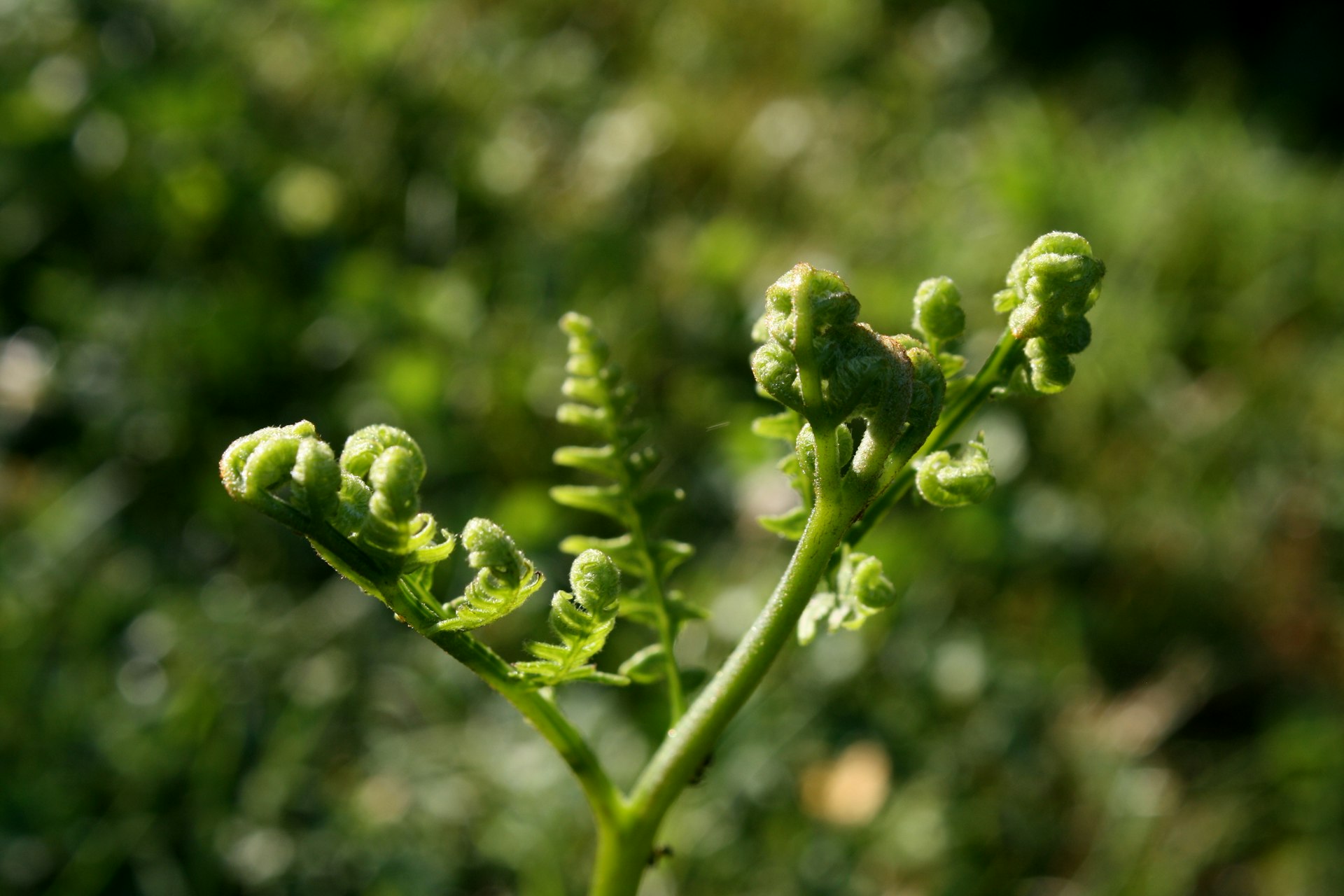
5.Nourishment:
Nourishing a Fiddlehead Fern plant involves providing it with essential nutrients through regular fertilization and ensuring it has access to a nutrient-rich soil mix. Use a balanced liquid fertilizer specifically formulated for ferns and dilute it to half strength. Apply the diluted fertilizer once a month during the growing season (spring and summer) to replenish nutrients in the soil and promote healthy growth.
6.Issues:
Common issues with Fiddlehead Fern plants include:
1. Overwatering
2. Under watering
3. Low Humidity
4. Pests
5. Fungal Diseases
6. Improper Light
7. Nutrient Deficiency
What are the benefits of Fiddlehead Fern plant?
The Fiddlehead Fern plant offers several benefits:
1. Edible Delicacy
2. Nutritional Value
3. Culinary Versatility
4. Aesthetic Appeal
5. Cultural Significance
6. Environmental Benefits

FAQS about growing Fiddlehead Fern plant
1.What are the nutritional benefits of consuming Fiddlehead Ferns?
Fiddlehead Ferns offer several nutritional benefits:
1. Rich in Antioxidants
2. High in Fiber
3. Vitamins and Minerals
4. Low in Calories
5. Hydration
2.Can all species of ferns produce edible fiddleheads, or are there specific varieties that are safe to eat?
Not all species of ferns produce edible fiddleheads, and some varieties may contain toxins or carcinogens that can be harmful if consumed. It's essential to properly identify the species of fern before consuming its fiddleheads. Some fern species that are known to produce edible fiddleheads and are considered safe for consumption include:
1. Ostrich Fern (Matteuccia struthiopteris)
2. Cinnamon Fern (Osmundastrum cinnamomeum)
3. Lady Fern (Athyrium filix-femina)
3. How do you properly identify Fiddlehead Ferns in the wild to ensure they are safe for consumption?
Properly identifying Fiddlehead Ferns in the wild is essential to ensure they are safe for consumption.
1. Appearance
2. Location
3. Leaf Shape and Structure
4.How do you properly store Fiddlehead Ferns after harvesting to maintain freshness?
To properly store Fiddlehead Ferns after harvesting and maintain their freshness, follow these steps:
1. Clean
2. Dry
3. Refrigerate
4. Temperature
5. Humidity
6. Use Promptly
5.Are there any safety precautions or considerations to keep in mind when foraging for Fiddlehead Ferns?
1. Proper Identification
2. Harvesting Regulations
3. Harvesting Practices
4. Location
5. Avoid Toxic Species
